Search
Search Results

Collection
Causes of War in History
This collection of resources examines the causes of various conflicts in the last millennium, from religious and civil wars to revolutions and global wars. The origins of conflict through history are often many and varied; they often, too...

Image
Europe in 1878 after the Congress of Berlin
The Unification of Italy and the Creation of Germany in the mid-19th century, alongside the Congress of Berlin in 1878, redefined the political landscape of Europe, consolidating fragmented states into unified nations while reshaping alliances...
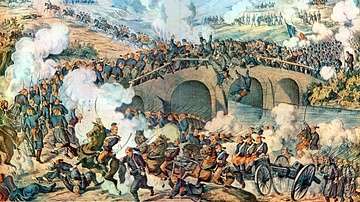
Image
Battle at Bridge Skit 1877 CE
Battle at Bridge Skit, November 9, 1877 CE. Romania, fighting on the Russian side, gained independence from the Ottoman Empire in 1878 CE after the end of the Russo-Turkish War.

Collection
The Steps to World War Two
The causes of WWII (1939-45) were many and varied, but there was a chain of international crises in Europe, which finally degenerated into a conflict that ultimately spread to engulf most of the world. In this collection of resources, we...
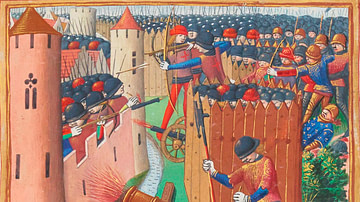
Collection
France v England: The 100 Years' War
There was a bitter rivalry between France and England throughout the 14th and 15th century CE and their frequent battles in this period are now known to history as the Hundred Years' War (1337-1453 CE). In this collection of resources, we...
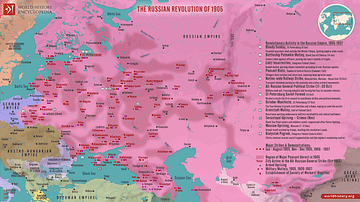
Image
Map of the Russian Revolution of 1905
This map illustrates the Russian Revolution of 1905, a wave of political and social unrest across the Russian Empire following defeat in the Russo-Japanese War (1904-5). The revolution was sparked by Bloody Sunday on 22 January 1905, when...
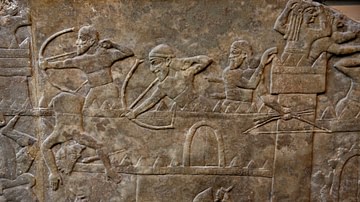
Collection
War, Strategy and Tactics in Ancient Mesopotamia
The ancient Mesopotamians pioneered many strategies, tactics and policies in warfare that would be used for thousands of years to come, some of which continue to this day. The Akkadian Empire was the first to build a standing army and the...

Definition
Ancient Japan
Ancient Japan has made unique contributions to world culture which include the Shinto religion and its architecture, distinctive art objects such as haniwa figurines, the oldest pottery vessels in the world, the largest wooden buildings anywhere...
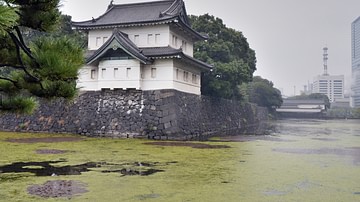
Definition
Edo Period
The Edo period refers to the years from 1603 until 1868 when the Tokugawa family ruled Japan. The era is named after the city of Edo, modern-day Tokyo, where the Tokugawa shogunate had its government. It is also sometimes referred to as the...

Definition
Azuchi-Momoyama Period
The Azuchi-Momoyama Period (Azuchi-Momoyama Jidai, aka Shokuho Period, 1568/73 - 1600 CE) was a brief but significant period of medieval Japan's history which saw the country unified after centuries of a weak central government and petty...